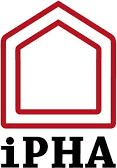
By Samira Sabulis, CCO of Dextall
As the world increasingly embraces sustainability, the construction industry faces a pivotal moment in determining the best materials and methods for retrofitting aging buildings. Two popular choices stand at the forefront of this conversation: Exterior Insulation and Finish Systems (EIFS) and Prefabricated (Prefab) exterior wall systems. This article explores why Prefab solutions, particularly Dextall’s innovative wall system, are the superior choice for retrofitting buildings and achieving Passive House standards.
The Challenge of Retrofitting for Modern Standards
Retrofitting older buildings to meet contemporary standards involves addressing several critical factors: safety, durability, cost efficiency, and environmental sustainability. Additionally, achieving Passive House standards—a rigorous energy efficiency standard—requires materials that offer exceptional thermal performance and airtightness.
Compliance with Building Codes and Passive House Standards
Modern building codes, such as the 2022 New York City Building Code (NYC BC 2022), emphasize the importance of noncombustible materials, particularly in high-rise and urban buildings. Compliance with these codes is critical for safety and legal adherence, while Passive House standards require superior energy efficiency and airtight construction.
EIFS: A Compliance and Performance Challenge
EIFS, incorporating foam plastic insulation, is classified as combustible. To comply with NYC BC 2022, EIFS installations must include fireblocking at every floor and around openings, as per Chapter 7, Section 703.5. This requirement complicates installation and increases costs. Furthermore, achieving the airtightness and thermal performance needed for Passive House standards with EIFS can be challenging and costly.
Prefab Walls: Streamlined Compliance and Superior Performance
Prefab exterior wall systems, especially those utilizing noncombustible materials, offer a streamlined path to compliance. Dextall’s wall system, for instance, uses aluminum, fiber cement, and stone, materials that naturally meet the ASTM E 136 noncombustibility tests required by NYC BC 2022. Additionally, Dextall panels provide excellent thermal performance and airtightness, making them ideal for achieving Passive House standards. This simplifies compliance, eliminates the need for additional fireblocking, and enhances energy efficiency.
Fire Safety: A Critical Concern
Fire safety is a paramount concern in densely populated urban environments. The materials used in exterior walls significantly influence a building’s fire resistance.
EIFS: Inherent Risks
EIFS, with its foam plastic insulation, poses inherent fire risks. Despite fireblocking measures, the potential for fire spread remains, particularly in high-rise buildings where maintaining consistent fireblocking can be challenging and costly.
Prefab Walls: Enhanced Safety
Prefab walls using noncombustible materials, like those in Dextall’s system, eliminate these fire risks. The noncombustible nature of these materials ensures they do not contribute to fire spread, significantly enhancing building safety. The simplicity of compliance further reduces risks associated with complex fireblocking requirements.
Durability and Performance
The long-term durability and performance of building materials are crucial for the sustainability and economic efficiency of structures.
EIFS: Vulnerability to Damage
EIFS is susceptible to damage from moisture, impact, and environmental wear. Issues like water infiltration, mold growth, and structural degradation are common, necessitating regular maintenance and repairs. These vulnerabilities can add up to 20% of the initial installation cost annually in maintenance.
Prefab Walls: Robust and Resilient
Prefab walls, particularly those made with durable materials like aluminum and fiber cement, offer superior resistance to moisture, impact, and environmental wear. Dextall’s wall system exemplifies this robustness, providing a longer lifespan with minimal maintenance. This resilience translates to significant cost savings, potentially reducing maintenance costs by up to 50% compared to EIFS.
Installation and Cost Efficiency
The complexity and cost of installation are critical factors in construction, influencing timelines and budgets.
EIFS: Labor-Intensive and Costly
The installation of EIFS requires meticulous attention to detail to ensure proper fireblocking and moisture resistance. This complexity increases labor costs and extends construction timelines, impacting overall project efficiency.
Prefab Walls: Efficient and Economical
Prefab walls are designed for ease of installation. The pre-manufactured panels, like those in Dextall’s system, are straightforward to install, reducing labor costs and accelerating construction timelines. Builders report up to 30% savings on labor costs and faster project completions with Prefab systems. This efficiency minimizes the risk of installation errors and enhances overall project management.
Regulatory Compliance and Environmental Impact
Navigating building codes and promoting sustainability are integral to modern construction practices.
EIFS: Complex Compliance and Environmental Concerns
Compliance with building codes using EIFS is challenging, with stringent fireblocking and noncombustibility requirements adding complexity and cost. Additionally, the environmental impact of foam plastic insulation is significant due to its production and disposal processes. Frequent maintenance further exacerbates this environmental footprint.
Prefab Walls: Simplified Compliance and Sustainability
Prefab walls, especially those like Dextall’s, naturally meet stringent building code requirements, simplifying the regulatory process. The use of recyclable materials such as aluminum and stone contributes to more sustainable building practices. The durability and long lifespan of Dextall panels reduce the need for frequent repairs and replacements, minimizing environmental impact. Buildings using Dextall align with LEED certification standards and Passive House requirements, promoting sustainable construction and reducing the overall carbon footprint.
Dextall: The Future of Prefab Walls
Dextall’s Prefab wall system stands out in the Prefab market for several reasons:
- Noncombustibility: Dextall uses materials that naturally meet NYC BC 2022 noncombustibility requirements, eliminating the need for additional fireblocking.
- Durability: Materials like aluminum, fiber cement, and stone ensure long-term performance with minimal maintenance.
- Installation Efficiency: Pre-fabricated panels simplify installation, reducing labor costs and accelerating project timelines.
- Sustainability: Recyclable materials and reduced maintenance needs promote environmentally-friendly construction practices.
- Energy Efficiency: Excellent thermal performance and airtightness make Dextall ideal for achieving Passive House standards.
In comparing EIFS and Prefab exterior wall systems, the benefits of Prefab solutions, particularly Dextall’s system, become evident. From enhanced fire safety and durability to streamlined compliance, cost efficiency, and environmental sustainability, Dextall offers a superior alternative. The inherent noncombustibility, robust performance, efficient installation, and eco-friendly materials position Dextall as the future of building exteriors.
As urban construction evolves and the demand for retrofitting buildings to meet modern standards increases, adopting safer, more durable, and sustainable materials is essential. Dextall’s innovative Prefab wall system meets these demands, providing a compelling choice for achieving both regulatory compliance and Passive House standards. For builders and developers navigating the complexities of contemporary construction, the choice is clear: Dextall leads the way in building exterior solutions.

























